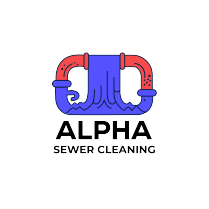24/7 EMERGENCY SERVICES
317 Loring Road Levittown NY 11756
Sewer line video inspection

Sewer line video inspections are a modern and highly effective method for diagnosing and addressing plumbing issues within sewer systems. By using a specialized camera system, plumbers and property owners can visually inspect the interior of sewer lines to detect problems like clogs, cracks, tree root intrusion, or pipe misalignment.
Here’s a comprehensive guide to sewer line video inspections, covering their purpose, process, benefits, and potential costs.
What Is a Sewer Line Video Inspection?
A sewer line video inspection involves inserting a waterproof, high-resolution camera attached to a flexible rod into the sewer line. The camera transmits live footage to a monitor, allowing the plumber to see the condition of the pipes in real time. This process eliminates guesswork, making it easier to pinpoint problems accurately.
When Is a Sewer Line Video Inspection Needed?
Persistent Drainage Issues
- Frequent clogs or slow drainage may indicate a deeper problem in the sewer line.
Foul Odors
- Unpleasant smells emanating from drains can signal blockages or pipe damage.
Water Backups
- Sewage backing up into sinks, toilets, or bathtubs suggests a serious issue.
Buying or Selling Property
- Inspections ensure the sewer line is in good condition before a real estate transaction.
Tree Root Intrusion
- Common in older pipes, roots can infiltrate sewer lines and cause blockages or damage.
Unexplained Lawn Patches
- Wet or unusually green areas in the yard could indicate a leak in the underground sewer line.
The Process of Sewer Line Video Inspection
Initial Assessment
- The plumber identifies an accessible entry point, typically through a cleanout, drain, or toilet.
Insertion of the Camera
- A small camera attached to a flexible cable is inserted into the sewer line.
- The cable is guided through the pipe system manually or using a motorized device.
Live Monitoring
- The camera sends real-time footage to a monitor.
- The plumber observes the pipe’s interior to locate blockages, cracks, or other issues.
Problem Diagnosis
- The footage helps identify the exact location and type of problem, such as tree roots, pipe collapse, or grease buildup.
Report and Recommendations
- After the inspection, the plumber provides a detailed report, including video evidence, and suggests solutions.
Benefits of Sewer Line Video Inspections
Accurate Problem Diagnosis
- Eliminates the need for invasive digging or guesswork.
- Pinpoints the exact location and nature of the issue.
Cost-Effective
- Reduces unnecessary repairs by identifying the specific problem area.
- Saves money by minimizing excavation.
Time-Saving
- Quickly identifies issues compared to traditional methods.
Non-Invasive
- No need to dig up large portions of the yard or flooring.
Preventative Maintenance
- Detects minor issues before they escalate into costly repairs.
Documentation
- Provides visual proof of the sewer line’s condition, which can be valuable for real estate transactions or insurance claims.
Common Issues Detected During Inspections
Tree Root Intrusion
- Roots can penetrate sewer lines through small cracks or joints, causing blockages.
Pipe Corrosion
- Older metal pipes may corrode over time, leading to leaks or collapse.
Blockages
- Buildup of grease, soap, debris, or foreign objects can obstruct water flow.
Pipe Misalignment
- Shifting soil or poor installation can cause pipes to misalign, disrupting drainage.
Cracks and Leaks
- Structural damage to pipes allows water to escape and can lead to soil erosion or sinkholes.
Collapsed Pipes
- Severe damage from aging, heavy loads, or ground movement can cause pipes to collapse completely.
Equipment Used in Sewer Line Video Inspections
Waterproof Camera
- Durable cameras capable of withstanding harsh sewer conditions, including water and debris.
Flexible Rod or Cable
- Allows the camera to navigate bends and turns within the sewer line.
Monitor
- Displays live footage for real-time analysis.
Locator Device
- Used to track the exact location of the camera within the pipe system.
Limitations of Sewer Line Video Inspections
Visibility Issues
- Poorly maintained or heavily clogged pipes can obscure the camera’s view.
Access Challenges
- Limited entry points or severely damaged pipes may require additional work before inspection.
Partial Diagnosis
- The inspection identifies issues but does not repair them. Additional tools and methods are needed for fixes.
Costs of Sewer Line Video Inspections
Basic Inspection
- $100–$300 for standard residential sewer lines.
Advanced Inspection
- $300–$500 for longer or more complex lines, such as in commercial properties.
Add-On Services
- Hydro jetting or pipe relining, if required, will add to the overall cost.
Preventative Measures Post-Inspection
Regular Maintenance
- Schedule annual inspections and cleanings to prevent major issues.
Avoid Flushing Non-Biodegradable Items
- Educate household members about proper waste disposal.
Install Root Barriers
- Prevent tree roots from infiltrating sewer lines.
Grease Management
- Never pour grease or fat down drains; use a disposal container instead.
Pipe Upgrades
- Replace aging or damaged pipes with durable materials like PVC or HDPE.
Conclusion
A sewer line video inspection is a valuable tool for identifying and resolving plumbing issues efficiently and non-invasively. Whether you’re dealing with persistent drainage problems or conducting routine maintenance, this method provides clarity and actionable insights to protect your plumbing system and property.
Newsletter
Drain cleaning involves removing clogs, debris, and buildup from pipes to restore proper water flow. It ensures smooth drainage, prevents blockages, and protects plumbing systems from damage. Professional drain cleaning uses tools like hydro jetting or augers for efficient and lasting results.
Design By Oll Solutions

